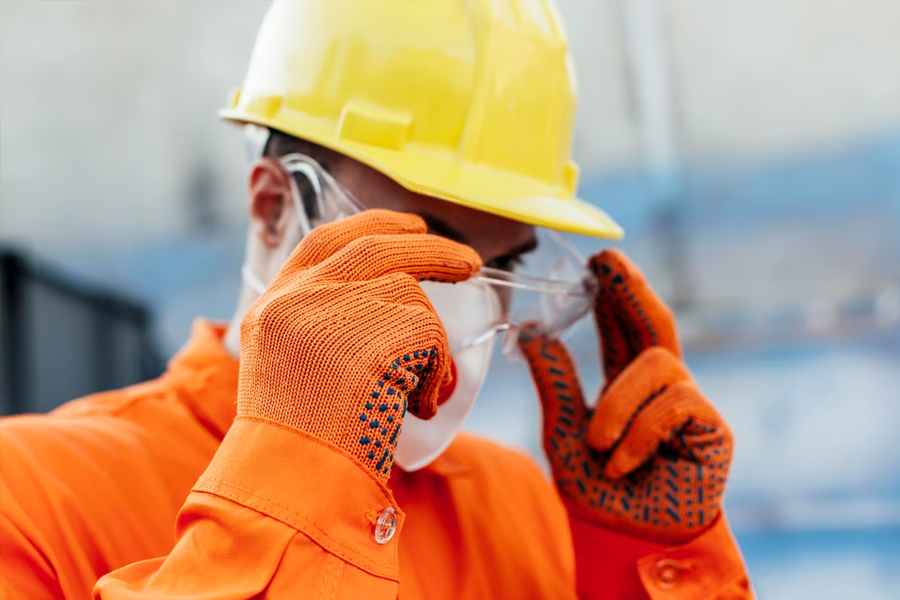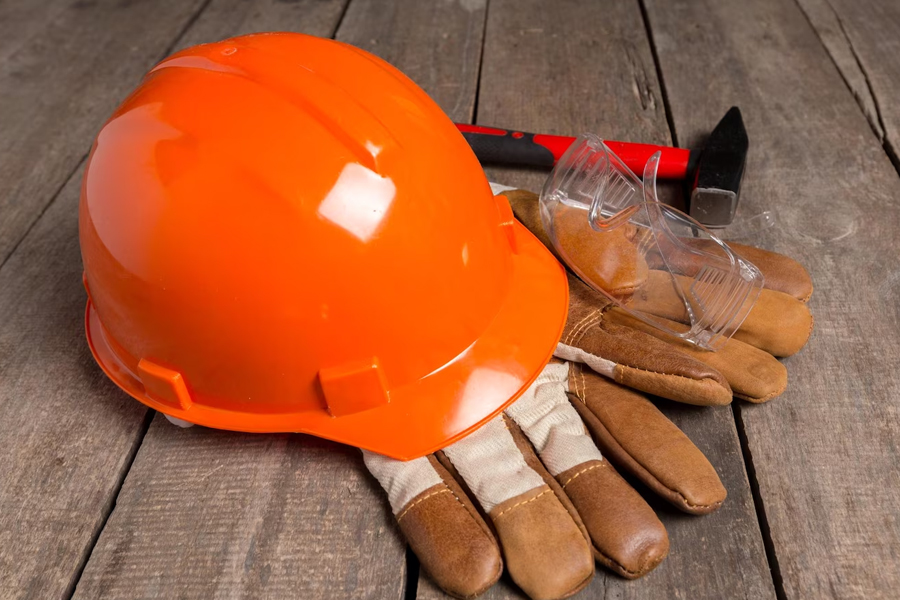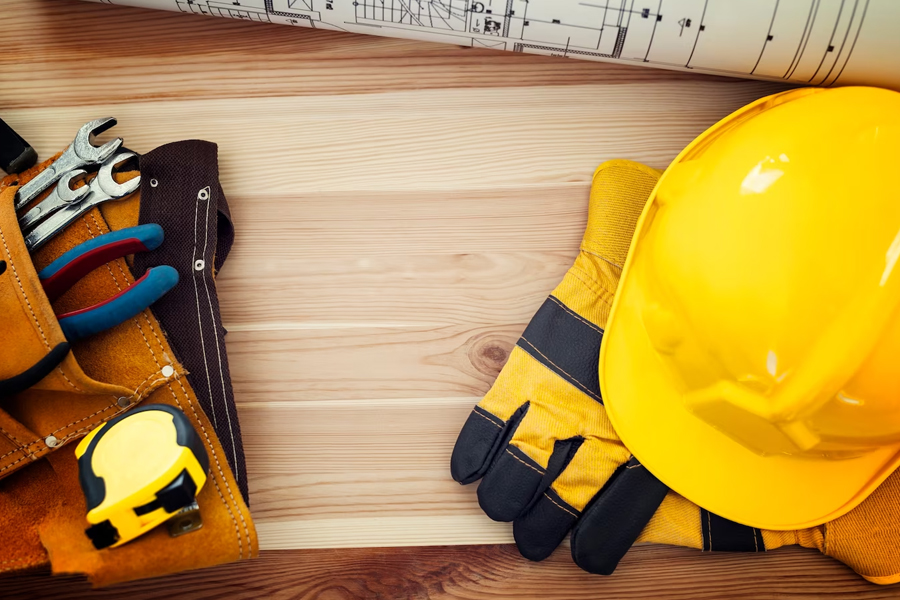Why Personal Safety Is Important?

What Item of Personal Safety Equipment Is Required When Working at Height
July 26, 2023
Guardian Gear: A Comprehensive Guide to Personal Safety Equipment
March 25, 2024In this fast-paced world, it’s too easy to get caught up in our daily routines and overlook the importance of personal safety. We often take for granted that we’ll be safe and sound without giving it a second thought. But have you ever stopped to consider just how crucial it is to prioritize your own safety?
Personal protection should always be a top priority, regardless of whether you’re at work or going about your everyday life. Understanding the significance of personal protective equipment (PPE) can make a world of difference.
Why Personal Safety Matters
First and foremost, personal safety is about protecting yourself from harm and ensuring your well-being. It’s about taking proactive steps to prevent accidents, injuries, or any potential threats that may arise.
By prioritizing your own safety, you are actively reducing the risks and dangers that you may encounter in various environments. Whether you work in a hazardous environment or an office setting, accidents can happen at any time.
By using the appropriate PPE, you contribute to creating a safer work environment for everyone. From practicing safe driving habits to being aware of our surroundings in public spaces, our own safety measures help us mitigate potential risks and ensure our own security.
Significance of PPE- Safeguarding Your Well-being
Personal safety equipment and personal protective equipment (PPE) are vital tools that help enhance our safety in various situations. These are specially designed gears and equipment that provide a barrier between potential hazards and our bodies.
- Prioritizing Your Physical Health
When was the last time you thought about your safety in terms of your physical health? It’s easy to take simple precautions for granted, but they can significantly reduce the risk of accidents and protect your well-being.
From wearing helmets while cycling to using seat belts in cars, these basic safety measures are vital. Statistics prove that these precautions save lives. Wearing a seat belt reduces the risk of death by about 45% and the risk of serious injury by about 50%.
Similarly, wearing a helmet while cycling can prevent head injuries and reduce the risk of fatalities by up to 85%. By incorporating these safety practices into our daily routines, we can safeguard ourselves and those around us from unnecessary harm.
Remember, taking that extra second to buckle up or put on a helmet could make all the difference.
- Navigating the Modern Workplace
Accidents and injuries in the workplace can have a significant impact on both your career and your overall well-being. That’s why PPE, such as hard hats, gloves, and safety goggles, play an integral role in various industries.
In hazardous work environments, proper protection is essential. It acts as a shield, protecting workers from potential injuries and exposure to harmful substances. PPE not only minimizes the risk of accidents but also helps prevent long-term health issues resulting from prolonged exposure to hazardous conditions.
By prioritizing safety in the workplace and ensuring the use of appropriate PPE, we can create safer environments that promote productivity and well-being.
- Empowerment Through Awareness
Knowledge is power when it comes to your own safety. The more aware you are of potential hazards, the better equipped you are to prevent them. That’s why education and awareness play a crucial role in safety.
Understanding how to identify risks in different scenarios empowers us to take proactive measures. Whether it’s recognizing potential fire hazards in our homes, practicing safe lifting techniques to avoid back injuries, or being aware of cyber threats online, awareness is key.
By staying informed and sharing this knowledge with others, we create a culture of safety. This includes teaching children about their own safety, promoting safe practices in our communities, and advocating for safer infrastructure and regulations.
Remember, personal safety is a collective effort. By making safety a top priority and equipping ourselves with the right information, we can protect ourselves and those around us.
Personal Protection Equipment: Exploring Essential Personal Safety Gear
When it comes to safety, having the right equipment is crucial. From protecting our senses to safeguarding our heads, hands, and feet, individual safety gear plays a vital role in preventing accidents and ensuring our well-being.
Let’s take a closer look at some essential gear.
- Eyes and Ears: Protecting Your Senses
Our senses are precious, and protecting them should be a priority. PPE designed to safeguard our eyes and ears can make a significant difference in our overall health and quality of life.
- Safety Glasses: When it comes to protecting your eyes, safety glasses are a must-have item. These specially designed glasses shield your eyes from flying debris, chemicals, UV rays, and other potential hazards.
- Safety Goggles: Safety goggles offer additional protection by completely sealing off your eyes from all angles. They provide a secure fit and cover a larger area than safety glasses, making them ideal for more hazardous work conditions.
- Earplugs: Exposure to loud noises can cause irreversible damage to your hearing over time. That’s where earplugs come in handy. These small foam or silicone inserts are designed to block out excessive noise levels while still allowing you to hear essential sounds.
- Earmuffs: Similar to earplugs, earmuffs provide excellent noise reduction but offer the advantage of complete coverage of the ear. They consist of padded cups that fit over your ears, creating a seal and blocking out noise.
By prioritizing the protection of our senses, we not only avoid immediate harm but also ensure long-term well-being.
- Head to Toe Protection: Gear for Every Situation
Accidents can happen anywhere, and our head, hands, and feet are particularly vulnerable. That’s why a range of personal safety equipment is available to provide the necessary protection for these areas.
- Helmets: No matter the activity, ensuring your head is adequately protected is crucial. Helmets are vital for sports like cycling, skateboarding, and skiing, as well as for construction workers and motorcyclists. They reduce the risk of head injuries in case of falls or accidents.
- Gloves: Our hands are exposed to various hazards daily, including cuts, burns, and chemical contact. Gloves offer protection against these risks. Cut-resistant gloves, heat-resistant gloves, and disposable gloves are just a few examples of specialized hand protection options.
- Full body suits: When it comes to protecting your torso, different situations call for different types of protective gear. Safety vests are essential for road workers. For more intensive protection, consider wearing full-body suits, such as coveralls or hazmat suits, which shield against chemicals or asbestos.
- Boots: Your feet bear the brunt of daily activities, making proper footwear crucial. Steel-toed boots provide extra protection against heavy objects or potential impacts. Slip-resistant shoes are essential in slippery conditions to prevent falls, while insulated boots keep your feet warm in extreme weather conditions.
Selecting the right gear for specific activities and environments is crucial. Investing in high-quality PPE and using it consistently can significantly reduce the risk of injuries.
- Breathing Easy: Respiratory Protection
In certain environments, airborne hazards pose a significant threat to our health. That’s where respiratory protection comes into play. From simple dust masks to advanced respirators, these tools help us breathe easily while working.
- Disposable Masks: Disposable masks, such as N95 respirators, have become increasingly common in recent times. These masks are designed to filter out at least 95% of airborne particles, including dust, pollen, bacteria, and viruses.
- Half-Face Respirators: Half-face respirators cover the nose and mouth, providing a higher level of protection than disposable masks. They are equipped with replaceable filters that can be selected based on the specific hazard.
- Full-Face Respirators: For more comprehensive respiratory protection, full-face respirators are an excellent choice. These masks cover the entire face, including the eyes, offering superior eye and face protection in addition to respiratory protection.
- Powered Air Purifying Respirators (PAPRs): Powered Air Purifying Respirators, or PAPRs, are a step up from traditional respirators. They consist of a facepiece connected to a battery-powered blower unit. PAPRs use a fan to draw in air through filters, providing a continuous flow of clean, filtered air to the wearer.
Understanding how these tools work and when they are essential is key to maintaining our health in high-risk environments. Always follow proper usage guidelines and ensure a proper fit for maximum effectiveness.
Integrating Safety Into Your Daily Routine
Safety should never be an afterthought – it should be an integral part of our daily lives. By making conscious efforts to prioritize safety, we can create a secure environment for ourselves and those around us.
Let’s explore how we can seamlessly integrate safety into our routines.
- Safety at Home
Your home should be a sanctuary, a place where you feel safe and protected. However, accidents can happen even within the comfort of our own four walls. Conducting a safety audit of your living space is a proactive way to identify potential hazards.
- Smoke Detectors: Start with the basics, such as ensuring your home has working smoke detectors and carbon monoxide alarms. These devices provide early warnings in case of fire or gas leaks, giving you precious time to evacuate and seek help.
- Electricity Safety: Next, focus on electrical safety. Check for overloaded power outlets, frayed wires, or faulty switches. It’s important to address these issues promptly to prevent electrical fires or electrocution.
- Childproofing: Childproofing is essential if you have young ones at home. Install safety gates, secure heavy furniture to the wall to prevent tip-overs, and use outlet covers to protect curious fingers from electrical sockets.
- First Aid Kit: Lastly, ensure that your home has a well-stocked first aid kit containing essentials like bandages, disinfectants, and emergency contact information. Being prepared for minor injuries can make a significant difference in addressing them effectively.
Creating a safe home environment goes beyond physical measures. Educate your family members about fire escape plans, emergency exits, and what to do in case of natural disasters.
- Safety On-the-Go
Personal safety is not limited to our homes; it’s something we should carry with us wherever we go. Whether traveling, commuting, or simply exploring new environments, being aware of our surroundings and taking proactive steps will empower us to stay safe.
- Situational Awareness: Situational awareness is key. Pay attention to your surroundings, trust your instincts, and avoid risky situations whenever possible. Stay alert to any suspicious activities or individuals, and be prepared to take appropriate actions if necessary.
- Destination Research: When traveling, research your destination beforehand. Familiarize yourself with local laws, customs, and potential safety concerns. Share your itinerary with a trusted friend or family member and update them on your whereabouts.
- Emergency Plan: Save important contact numbers, including local emergency services, embassy/consulate information, and your hotel’s contact details. Carry a fully charged cell phone and consider downloading safety apps.
- Public Transport: While commuting, be mindful of public transportation safety. Stay in well-lit areas, travel with others whenever possible, and be aware of your belongings. Keep your personal belongings secure and avoid displaying expensive items that may attract unwanted attention.
Remember, safety is not a destination – it’s a mindset that we carry with us wherever we go.
Final Words: Your Safety, Your Responsibility
In a world full of uncertainties, one thing is clear: your safety should always be a top priority. From personal safety equipment to cultivating a safety-conscious mindset, the choices you make can significantly impact your well-being. Take charge of your own protection and embrace the importance of safety in your life.
Investing in PPE is a proactive step towards safeguarding yourself from potential risks and hazards. From helmets and safety goggles to reflective gear and sturdy footwear, select options to suit your needs.
Remember, your safety matters. Don’t underestimate the impact that small safety measures can have on your life. By prioritizing safety, you are taking control of your own well-being and setting an example for those around you.
Stay safe, stay prepared, and embrace the power of safety in your life.



